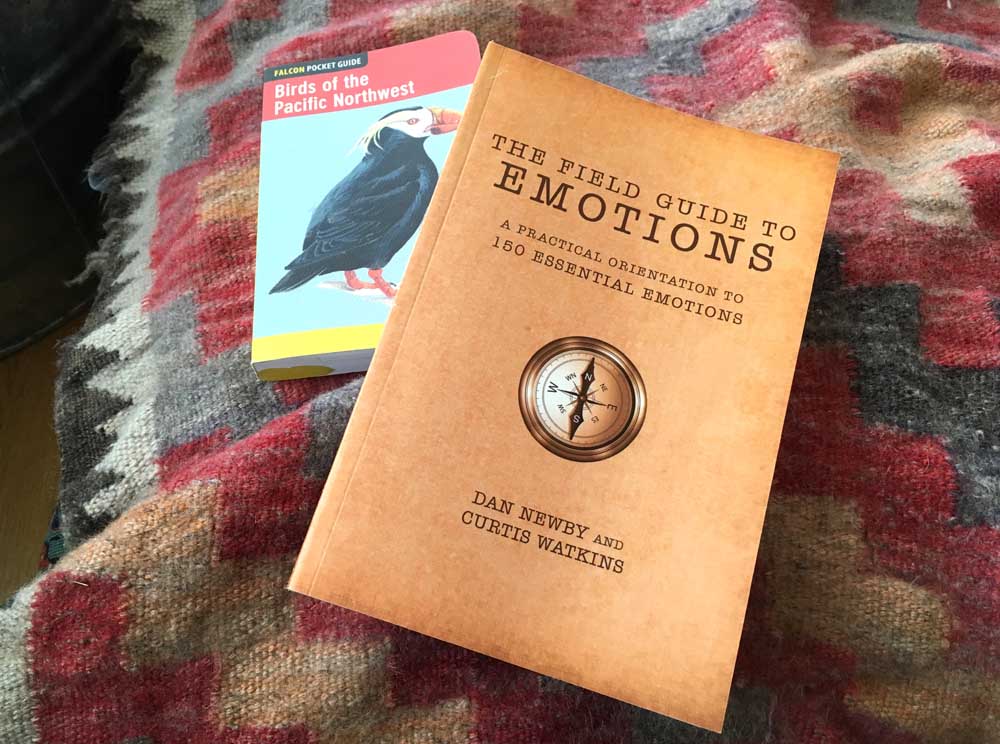View from the Porch: A field guide to emotions is just what we need
Published 11:00 am Thursday, June 27, 2019

- Curtis Watkins’ “A Field Guide To Emotions” helps people identify and recognize their own emotions. Plus it has elements in common with a birders field guide.
In the summer of 1977 I met Curtis Watkins in New York City. We were habitués of a cafe in Greenwich Village. After a long hiatus, we met again in 1997; he was taking a class with an Iyengar yoga teacher who I was writing about. After that, we made a point to stay in touch.
Watkins is the co-author of a new book called “The Field Guide To Emotions.” Professionally, Watkins has been an actor, a cab driver, and a construction worker. When we met in ’77 he was one of the first male flight attendants for TWA. For the last 20 or so years, Watkins has been an executive coach whose work is rooted in somatics. His co-author Dan Newby is also an executive coach, and author of “The Unopened Gift: A Primer in Emotional Literacy.”
Reframing emotions as a practical tool is a relatively new concept.
“We’ve both been coaches doing executive trainings since 1999,” Watkins said. “Dan’s area of study is emotions and mine is somatics.” The process of writing the book, he said, took more than a year. “I made a grid and we came up with all the different emotions we wanted to describe and explain.”
Watkins said most humans walking the earth are pretty much emotional illiterates. He’s hoping to change that.
“Two hundred years ago, only 10% of humans on the planet could read and write, and now probably 90% of people can read and write,” he said. “Right now I think only about 10% of the population are emotionally literate. But in 200 years we could have 90% of the human population having the ability to recognize and identify their own emotions, as well as the emotions of others.”
The design and format of “The Field Guide to Emotions” is easy to read and attractive. Besides the expected emotions of fear, love, pride, pity, and passion, the book delves into emotions we may be less comfortable talking about, like envy, indignation, and pessimism. It’s interesting to learn that when we’re feeling guilty, our bodies express that as heaviness. Guilty people breathe more slowly and shallowly. People who feel frustrated experience tightness in the jaw; people who feel entitled are prone to whine. Hopeful people stand up straighter. While sentimental people become easily attached to specific people, and even objects, and approach the world with an open heart, their sentimentality may interfere with their ability to accept or even understand ideas based on logic.
Because the emotions defined and described in the book are organized A-Z, Watkins said his co-author originally wanted to call the book a dictionary.
He resisted and came up with the book’s title.
“I’m a bird watcher and I’ve always loved field guides,” he said.
Watkins said coaching work never gets old. “I’m curious about people and continue to be curious.” What he enjoys most is experiencing clients becoming more aware of their bodies as domains of wisdom and knowledge, and not just a machine to carry their heads around.
“As a culture, we’ve relegated the body to an ‘it,’” he said, “rather than a being. My work is to engage people to live their lives more fully.”

